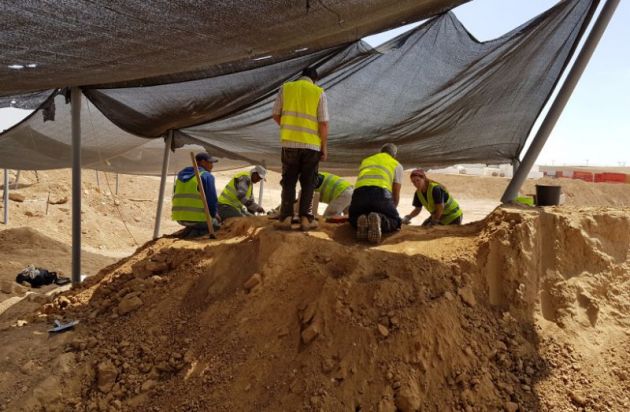African figurines found in early Christian graves in Israel

Archaeologists excavating Byzantine tombs near the Nevatim air base in southern Israel have discovered two unique pendants that may indicate early Christian converts from Ethiopia visiting the Holy Land.
Experts say that the figurines prove that a Christian community lived in southern Israel nearly 1,000 years ago, The Jerusalem Post reported on May 18.
The research was conducted at the Tel Malhata archaeological site in the Negev's Arad Valley by researchers with the Israel Antiquities Authority (IAA) and the University of Cologne, in Germany.
"The figurines show that a Christian community lived in the south of the country about 1,500 years ago, possibly with some of its members coming from Africa," said the researchers.
For a place few people have heard of, the town at Tel Malhata in the northeastern Negev Desert had a long and distinguished history, according to the Haaretz newspaper.
It is now also home to one of the stranger finds recorded in Israeli archaeology: wooden pendants of what are African-style heads, carved from Southeast Asian blackwood, found in early Christian graves.
"It is a very special find," said Dr. Noé D. Michael of the Israel Antiquities Authority and the University of Cologne in Germany, who handled the inspection and assisted at the excavation next to the Nevatim air base in the Negev.
During the latest excavations, teams located approximately 155 tombs, but two burials contained objects distinct from anything else found at the site—bone and wooden figurines with facial features resembling those of Africans, Archaeology News reports.
"It is a very special find," agrees Dr. Noé D. Michael of the Israel Antiquities Authority and the University of Cologne in Germany, who handled the inspection and assisted at the excavation next to the Nevatim air base in the Negev, which is really where this story begins.
The archaeologists excavating the necropolis also discovered three bone figurines, typical of this region.
Two of them were carved from ebony, a rare material found in southern India and Sri Lanka.
These had been carefully placed in one grave containing the remains of a woman and a child, and in a second burial of another woman.
Researchers believe that the two women and the child may have been early Christian immigrants from Ethiopia who moved to the site between the 4th and 7th centuries A.D.
The objects have small perforations, indicating that they were likely worn around the neck as pendants. These may have served as small mementos from home or possibly representations of ancestors.